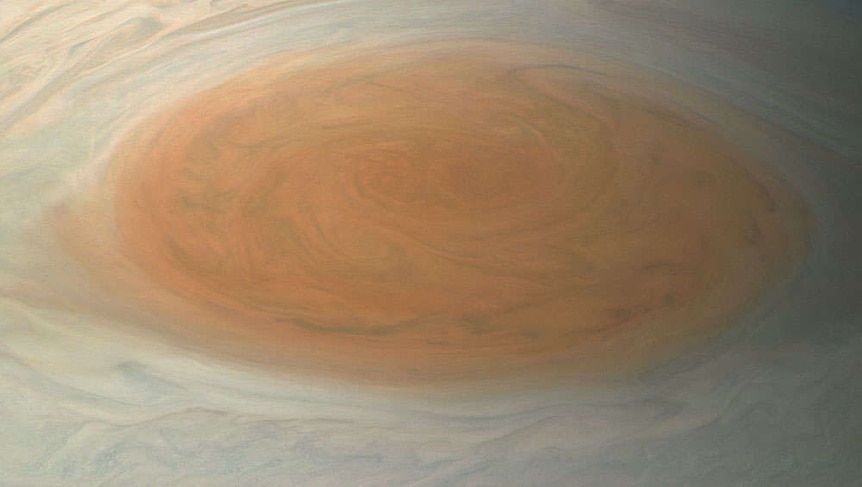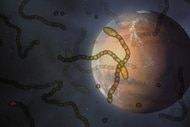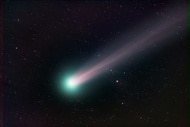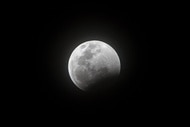Create a free profile to get unlimited access to exclusive videos, sweepstakes, and more!
Unraveling the Mystery of Jupiter's Great Red Spot
A new study suggests the Great Red Spot might be much younger than previously thought.
This summer, theatergoers will return to tornado alley in Twisters, starring Daisy Edgar-Jones, Glen Powell, and Anthony Ramos. In the ‘90s, Twister showed a generation the utter destructive power of storm systems and our powerlessness in the face of them, and Twisters promises to up the ante with even more powerful storms fed by ongoing climate change.
Despite the incredible (and sometimes fire-filled) intensity of earthly tornadoes, we should count ourselves lucky that even our most powerful storms are relatively calm, as planetary storms go. For far more turbulent forces, we need look only two planets distant, to the crown jewel of the solar system, the massive gas giant Jupiter and its Great Red Spot.
For More on Jupiter:
How Long is a Day on Jupiter, Saturn, Uranus, and Neptune?
Jupiter has 320-MPH Hurricane Winds Along its Equator, JWST Finds
Just in Time for Halloween, NASA's Juno Mission Glimpses Horrifying "Face" on the Surface of Jupiter
Jupiter’s Great Red Spot Might be Much Younger Than We Thought
Jupiter has captured the imaginations of sky gazers for centuries. It’s the largest planet in the solar system with a vast collection of moons, some of which are large enough to have been planets in their own right, had they not tacked their cart to Jupiter’s gravitational wagon. Its surface is punctuated by various stripes and spots, each evidence of the turbulent gaseous conditions there.
Its most notable feature, the Great Red Spot (GRS), is the largest and longest-running storm in the entire solar system. It’s recognizable for its reddish color, large ovular shape, and seemingly perpetual lifespan. We know that the GRS has been raging since at least 1831, but some astronomers have suggested it has been churning for centuries longer.
Italian astronomer Giovanni Domenico Cassini observed a dark spot, later called the Permanent Spot (PS) in 1665, and there has been speculation that the PS and the GRS are one and the same. If so, that would mean that the storm has been raging for nearly 400 years. But a new study published in the Geophysical Research Letters suggests the GRS is only about half that old and distinct from the older storm. Instead, researchers suggest that the so-called Permanent Spot was not so permanent, after all.
Understanding the machinations of Jupiter is a complicated endeavor. Its surface features, those color striped bands and swirls, are cold clouds of water and ammonia swirling in an atmosphere of hydrogen and helium. The energies and pressures at play are staggering when compared with even the most intense weather systems we have here at home. For scale, if the Earth were about the size of a grape, then Jupiter would be the size of a basketball, roughly 1,300 times larger.
The Great Red Spot extends an estimated 300 miles down from the surface and it stretches a little more than 10,000 miles from one side to the other. It’s so large that you could stick the entire Earth inside of it with about 1,000 miles to spare on either side. To figure out if the GRS and the PS are the same storm, researchers analyzed observations and conducted a year-by-year comparison of size, ellipticity, area, and motion from the earliest observations all the way through 2023. Then they simulated the storms based on those observations and comparisons.
Based on their simulations, the Permanent Spot petered out sometime after it was observed in 1665 and later in 1713. The Great Red Spot would then have cropped up in roughly the same place. It’s worth noting that some scientists not involved with the study are skeptical of the results and instead suggest that the similar placement of both spots indicates that they are related. Instead of seeing two distinct storms, we might be seeing the same storm evolving and changing over time. Whatever the reality, we’re just glad that this particular storm is about 500 million miles away.
Twisters strikes theaters everywhere July 19, 2024, get your tickets now!
































